Lasix | 40 mg | Tablet | 10 pcs
৳ 10.00
Brand Name: Lasix Tablet
Generic: Furosemide
40 mg
Manufacturer: Sanofi Bangladesh Ltd.
Unit Price: ৳ 1.00 (10 x 10: ৳ 100.00)
Indications
Frusemide is a diuretic recommended for use in all indications when a prompt and effective diuresis is required.
- Frusemide 40 mg tablet is used for cardiac, pulmonary, hepatic and renal oedema, peripheral edema due to mechanical obstruction or venous insufficiency and hypertension.
- Frusemide 250 mg tablet is used for the treatment of advance chronic renal failure
- Frusemide 20 mg intravenous formulation is appropriate for use in emergencies or when oral therapy is precluded. Indications include cardiac, pulmonary, hepatic and renal oedema.
Therapeutic Class
Pharmacology
Dosage
40 mg Tablet-
Edema:
- Adults: The initial adult dose is 40 mg daily, reduced to 20 mg daily or 40 mg on alternate days. In some patients daily doses of 80 mg or higher (given in divided doses) may be required. The individually determined single dose should then be given once or twice daily (eg, at 8 am and 2 pm). For resistant edema, 80-120 mg daily. In patients with clinically severe edematous states the dose of furosemide may be carefully titrated up to 600 mg/day. When doses exceeding 80 mg/day are given for prolonged periods, careful clinical observation and laboratory monitoring are particularly advisable.
- Neonate: 0.5-2 mg/kg every 12-24 hours (every 24 hours if postmenstrual age under 31 weeks).
- Child 1 month-12 years: 0.5-2 mg/kg 2-3 times daily (every 24 hours if postmenstrual age less than 31 weeks); higher doses may be required in resistant edema; max. 12 mg/kg daily, not to exceed 80 mg daily.
- Child 12-18 years: 20-40 mg daily, increased in resistant edema to 80-120 mg daily.
- Elderly: In the elderly furosemide is generally eliminated more slowly. Dosage should be titrated until the required response is achieved.
Hypertension:
- Adults: The usual initial dose of furosemide for hypertension is 80 mg, usually divided into 40 mg twice a day. Dosage should then be adjusted according to response. If response is not satisfactory, add other antihypertensive agents. Children: The usual dose is 1-3 mg/kg body weight daily up to a maximum dose of 40 mg/day.
- Elderly: In the elderly furosemide is generally eliminated more slowly. Dosage should be titrated until the required response is achieved.
250 mg Tablet-For selected patients with advanced chronic renal failure, diuretic therapy may be started with Frunep orally. If conventional doses (80 to 160 mg orally) fail to produce an adequate diuresis, a single dose of 250 mg is given as a starting dose. If a satisfactory diuresis does not ensue within 4-6 hours, the initial dose may be doubled to 500 mg. The criterion of optimal dosage is a urinary output of at least 2.5 liters per day. A maximum daily dose of 1000 mg should not be exceeded.
Syrup-
Furosemide Liquid has an exceptionally wide therapeutic range, the effect being proportional to the dosage. Furosemide Liquid is best given as a single dose either daily or on alternate days. The usual initial daily dose is 40 mg. This may require adjustment until the effective dose is achieved as a maintenance dose. In mild cases, 20 mg daily or 40 mg on alternate days may be sufficient, whereas in cases of resistant oedema, daily doses of 80 mg and above may be used as one or two daily, or intermittently. Severe cases may require gradual titration of the furosemide dosage up to 600 mg daily. The recommended maximum daily dose of furosemide administration is 1,500 mg.
Intravenous Formulation-
Edema:
- Adults: Doses of 20-50 mg intramuscularly or intravenously may be given initially. If larger doses are required, they should be given increasing by 20 mg increments and not given more often than every two hours. If doses greater than 50 mg are required it is recommended that they should be given by slow intravenous infusion. The recommended maximum daily dose of furosemide administration is 1,500 mg.
- Neonate: 0.5-1 mg/kg every 12-24 hours (every 24 hours if postmenstrual age under 31 weeks).
- Child 1 month-12 years: 0.5-1 mg/kg repeated every 8 hours as necessary; maximum 2 mg/kg (max. 40 mg) every 8 hours.
- Child 12-18 years: 20-40 mg repeated every 8 hours as necessary; higher doses may be required in resistant cases.
- Child 1 month-18 years: By continuous intravenous infusion: 0.1-2 mg/kg/hour (following cardiac surgery, initially 100 micrograms/kg/hour, doubled every 2 hours until urine output exceeds 1 mL/kg/hour).
- Elderly: In the elderly furosemide is generally eliminated more slowly. Dosage should be titrated until the required response is achieved.
Hypertension:
- Adults: Doses of 20 to 50 mg intramuscularly or intravenously may be given initially. If larger doses are required, they should be given increasing by 20 mg increments and not given more often than every two hours.
- If doses greater than 50 mg are required it is recommended that they should be given by slow intravenous infusion. The recommended maximum daily dose of furosemide administration is 1,500 mg. Children: Parenteral doses for children range from 0.5-1.5 mg/kg body weight daily up to a maximum total daily dose of 20 mg.
- Elderly: In the elderly furosemide is generally eliminated more slowly. Dosage should be titrated until the required response is achieved.
Administration
Tablet: May be taken with or without food. May be taken with meals to reduce GI discomfort.
Injection: Injection should be administered in children by slow intravenous injection
Interaction
Contraindications
Side Effects
Pregnancy & Lactation
Precautions & Warnings
Overdose Effects
Symptoms: Dehydration, electrolyte disturbances, hypotension and cardiac toxicity, hypochloremic alkalosis, hypokalaemia, blood volume reduction.
Management: Symptomatic and supportive treatment. Replacement of excessive fluid and electrolyte losses. Ensure adequate drainage in patients with urinary bladder outlet obstruction (e.g. prostatic hypertrophy). Treat hypotension with appropriate IV fluids.
Storage Conditions
| Generic Name | Furosemide |
|---|---|
| Size | 40 mg |
Only logged in customers who have purchased this product may leave a review.



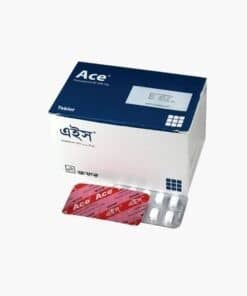
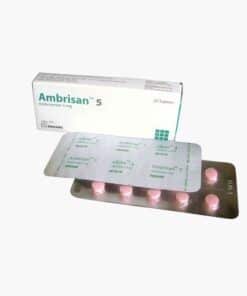
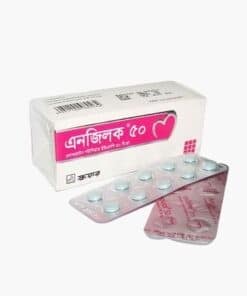
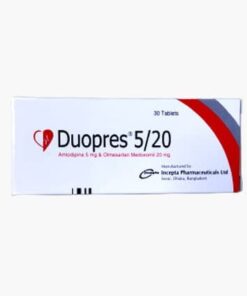
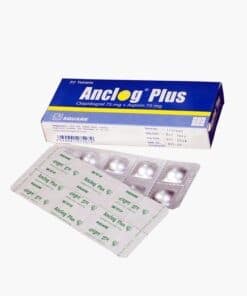
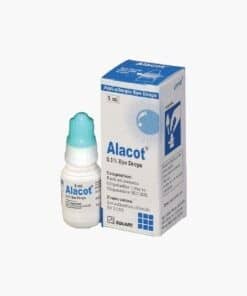
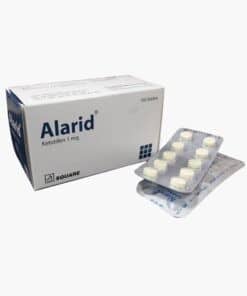
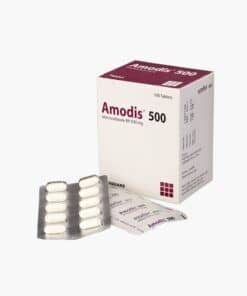
Reviews
There are no reviews yet.